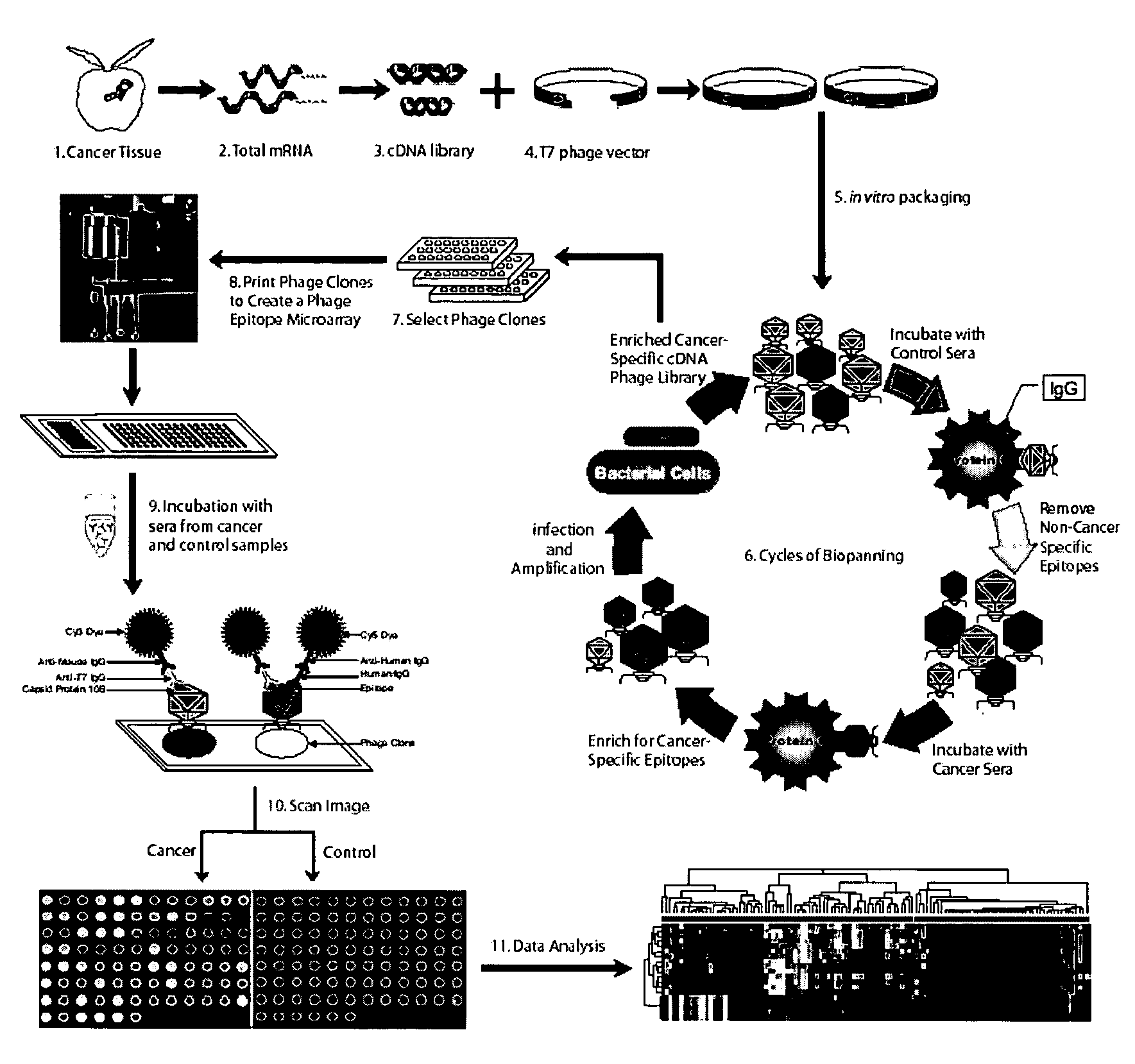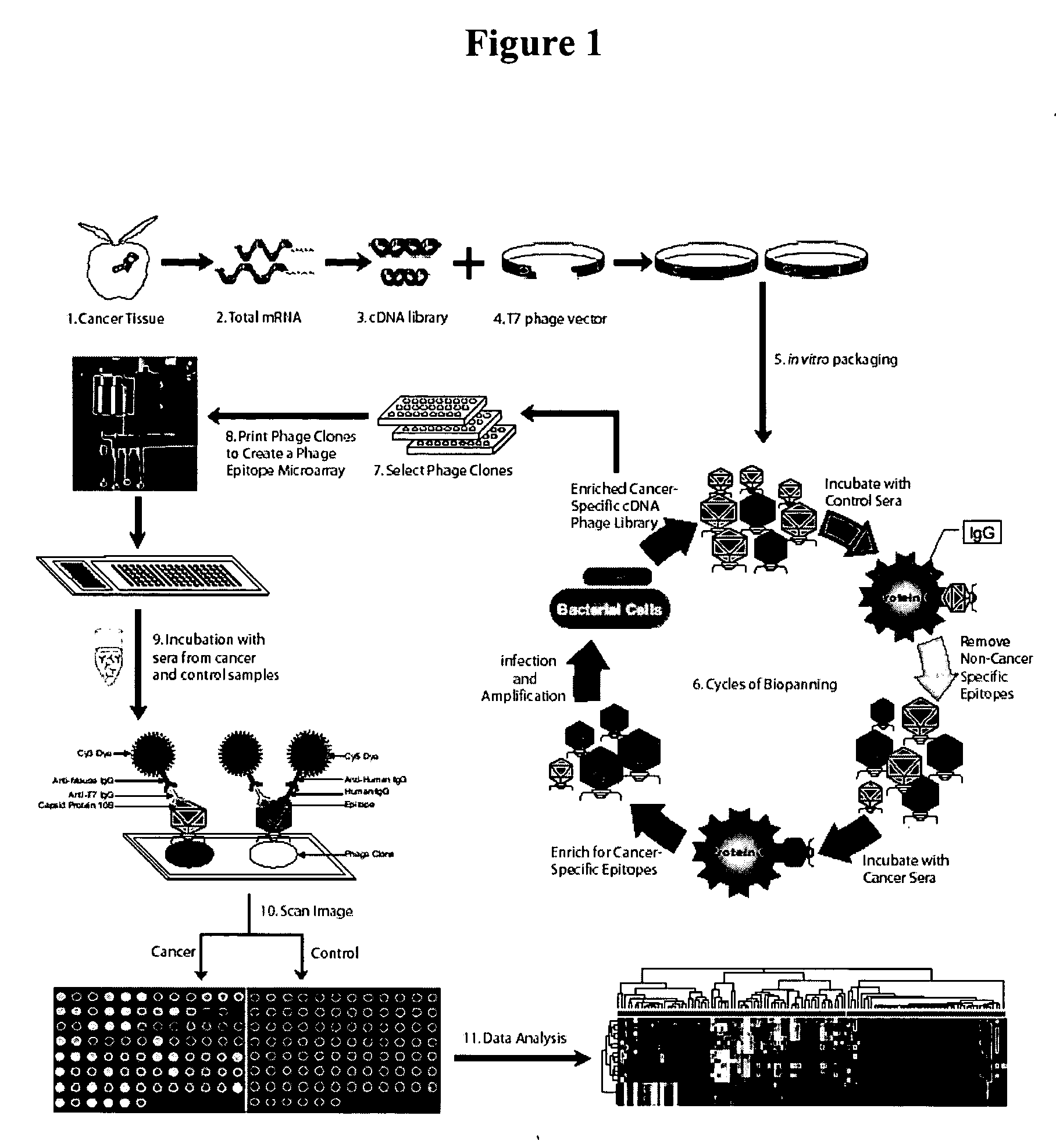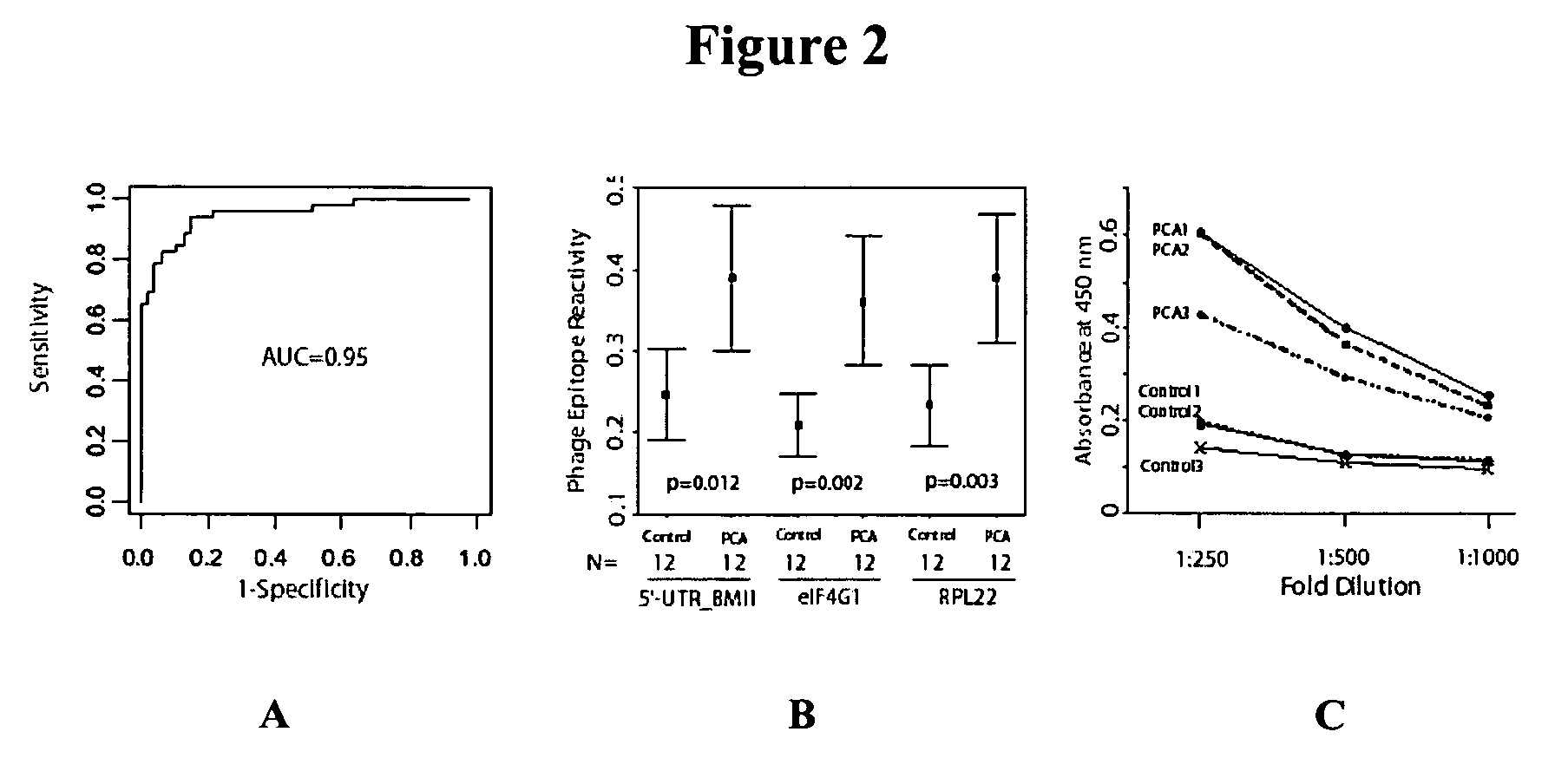Phage microarray profiling of the humoral response to disease
a phage microarray and humoral response technology, applied in the field of disease diagnosis, can solve the problems of lack of prostate cancer sensitivity and specificity of serum psa test, and the impact of psa screening on cancer-specific mortality,
- Summary
- Abstract
- Description
- Claims
- Application Information
AI Technical Summary
Benefits of technology
Problems solved by technology
Method used
Image
Examples
example 1
Phage Array Profiling of Prostate Cancer
[0297] This Example describes a phage array profiling method of the present invention as applied to prostate cancer.
A. Methods
[0298] Patient Population and Samples. At the time of diagnosis and prior to radical prostatectomy, sera from biopsy-proven clinically localized prostate cancer participants were collected by the University of Michigan Specialized Research Program in Prostate Cancer (SPORE) tissue / serum bank between January 1995 to January of 2003. The average age of all prostate cancer patients was 59.6 (range 41-74). For post-prostatectomy prostate cancer patients, the average age and PSA value were 58.1 and 0.169 ng / ml respectively. Sera from lung adenocarcinoma patients (average age 53.9) without any known history of prostate cancer were used. As controls, serum samples from 85 age-matched males (average age 62.5, range 50-80) with no known history of cancer were used for the study. All sera were stored in aliquots at −20° C. u...
example 2
Breast Cancer Detection by Epitomic Profiling of the Humoral Immune Response
[0333] This Example describes an investigation of the humoral immune signature in breast cancer. The phage display breast cancer cDNA library was purchased commercially from Novagen. The library was enriched for breast cancer specific phage epitopes using a pool of IgG from 10 breast cancer sera and 10 normal controls. A total of 2,304 phage clones were picked and printed on slides to make a high-density phage epitope microarray. By applying this platform, 77 sera samples were screened, including 42 breast cancers and 35 normal controls. The images and data were analyzed and normalized as for prostate cancer (See Example 1). In order to build a predictor, a total of 28 cancers and 24 controls were randomly selected and assigned as training set, and the remaining 14 cancers and 11 controls served as test set. The best performing clones were selected from the training set by t-test with 1000× permutation. A ...
example 3
Humoral Immune Response Profiles Associated with Diagnosis and Prognosis in Lung Adenocarcinomas
A. Construction of Phage-Epitope Protein Microarray
[0334] The approach described above for profiling of prostate cancer (See Example 1) was used to identify epitomic biomarkers of lung cancer (FIG. 13). To develop a phage display library for lung cancer, total RNA was isolated from 7 lung cancer tissues (3 lung adenocarcinomas and 4 squamous). The phage library was then enriched by affinity purification (biopanning) using individual serum samples from 6 adenocarcinomas, 4 squamous and 3 non-cancer controls. Thus, a total of 13 enriched phage libraries were created. After four rounds of biopanning, epitopes that specifically elicit a humoral immune response in lung cancer patients or controls were enriched for. Totally, 2304 phage-epitope clones were selected randomly from the 13 biopanned libraries in order to generate epitope microarrays. Once in a microarray format, these enriched p...
PUM
| Property | Measurement | Unit |
|---|---|---|
| diameter | aaaaa | aaaaa |
| volume | aaaaa | aaaaa |
| volume | aaaaa | aaaaa |
Abstract
Description
Claims
Application Information
 Login to View More
Login to View More - R&D
- Intellectual Property
- Life Sciences
- Materials
- Tech Scout
- Unparalleled Data Quality
- Higher Quality Content
- 60% Fewer Hallucinations
Browse by: Latest US Patents, China's latest patents, Technical Efficacy Thesaurus, Application Domain, Technology Topic, Popular Technical Reports.
© 2025 PatSnap. All rights reserved.Legal|Privacy policy|Modern Slavery Act Transparency Statement|Sitemap|About US| Contact US: help@patsnap.com



